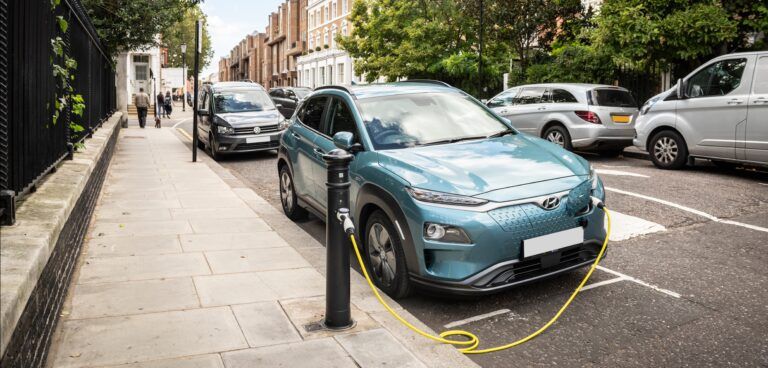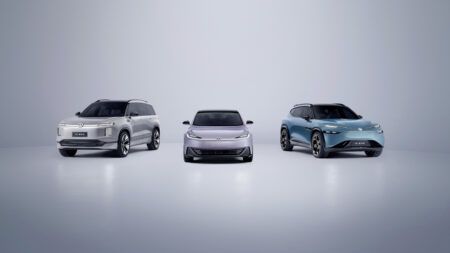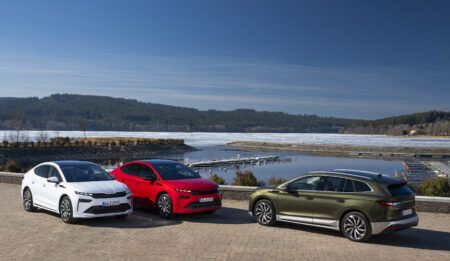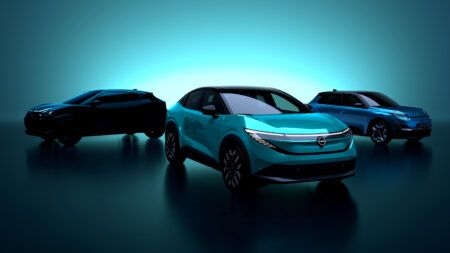At an event held by the Society of Motor Manufacturers and Traders dedicated to electrification, it saw industry leaders and government figures address the challenges in creating a sustainable transport system.
With the target set by the UK to ban sales of new petrol and diesel vehicles by 2030, the SMMT Electrified event discussed how to deliver a net zero transport system with the likes of Volkswagen, Polestar, Lucid, and the UK secretary of state for transport Grant Shapps involved.
SMMT’s chief executive Mike Hawes inaugurated the event with an address on the automotive landscape and what he believes are the most important areas of focus to achieve the UK and automotive industry’s goals. His speech in full can be read below:
“Zero emissions motoring by 2030. An ambitious target. An ambition we share with government and with society.
An ambition we can meet – but only if all stakeholders play their part. Only if government creates the right conditions for us, and for others. –– Only if it is a strategy, not just a soundbite.
It is a more onerous target than has been set for any other industry in this country. Tougher than those set for aviation. Harsher than those for construction. More demanding than those set for the energy sector, the sector which is to power our electric vehicles.
Net Zero forms a key plank in the Government’s Plan for Growth. Yet for other sectors, the narrative is “working with industry”; for automotive, the policy is just “end the sale”.
So, government seems to have the automotive industry in its sights, but it seems to have lost sight of one vital player in this deal. The consumer. The people who will have to buy the products if this ambition is to be met.
As manufacturers we are stepping up to the plate. One in four available models can now be plugged in, one in ten now powered purely by electricity. 150 models available, and the number is rising. But we will only succeed if the consumer thinks they are affordable, they are convenient and they are the right choice for them. This means giving people the incentives to buy them and the infrastructure to charge them. Both are currently lacking.
Electric vehicles may be cheaper to run but they are more expensive to manufacture and, therefore, to purchase. If we are to ask consumers to change their behavior, they need to be encouraged to do so. We can appeal to their good nature and their desire to save the planet but that won’t transform a market. The ownership experience must be cheaper, more enjoyable, easy. That is not yet the case. It’s not so much a race to zero as a game of snakes and ladders.
Declare a 2030 end of sale date and align the industry – climb the ladder. Cut Plug-in Car and Van Grant – slide down the snake. Increase rapid and ultra-rapid charging on major roads – climb up another ladder. Reduce home charging grants – slide down another snake Secure favorable trade terms in Brexit and announce funding for automotive industrial transformation – climb up that next ladder. Abolish Go Ultra Low, ignore road transport decarbonization and infrastructure needs in your budget? Slither back down again.
This sends the wrong message to investors. When other markets are increasing incentives, we are cutting ours. If we are to achieve our ambition, our world class ambition, we need a world class offer.
Let’s be realistic about the challenges we face. Almost half of drivers don’t believe they will be ready to drive an electric vehicle by 2030. Many believe that, because of cost and a lack of infrastructure, they will never drive one.
The government could regulate the market to get us there. But it will be at a heavy price – in terms of investor confidence, government revenues, consumer acceptance. We will not meet our goals if we do not change the hearts and minds of consumers.
That means giving consumers the incentive to buy electric vehicles. And not just business customers, retail customers. Customers need to be persuaded to invest in a vehicle that won’t be filled up in 2 minutes around the corner but one that could be charged at home.
Over one in three households do not have a driveway or a designated parking space. Most early EV adopters can park and charge off street. But those in flats, terraced houses, shared houses, cannot. In London, with a population of nine and a half million there are only around 7000 public charging points. One for every 1300 people. Scotland, just over 2,000 for a population of five and a half million. Wales, 846 charging points for a population of more than three million. Northern Ireland just 325 for a population of nearly two million.
And here is another crucial point, in the UK, one in ten of existing charging points doesn’t work. You might think that OK. I don’t. In the Netherlands fewer than one in a hundred charging points is defective. Imagine buying a car when you knew one in ten of them wouldn’t work.
To meet the 2030 target, we need three ‘I’s to come together. Industry. We can meet our targets. The models are there, the investments – massive investments – made. But it will be for nothing if the consumer cannot afford them. Hence the second “I” on Incentives. And it will also be for nothing if the infrastructure – the last “I” – isn’t there or, worse, doesn’t work. The lack of both explains why only around one in fifty vehicles bought by private consumers is electric. That has to change. There is so much at stake. Our planet and our prosperity.
Nearly 900,000 skilled jobs in our industry with millions more in support. £326 billion in turnover across the sector. One in ten of all UK exported goods is automotive. That cannot be sustained if we stand still. Our global leadership in internal combustion engines counts for little in the new economy. We must shift to electric vehicles and fast.
This means making the UK THE most attractive destination to invest in zero emission technologies. Stimulating investment, creating battery gigafactories, transforming the supply chain, upskilling our world-renown workforce and creating the conditions that make manufacturing competitive and the market strong.
We, as an industry, are investing in Government’s ambition. Every day you read of major manufacturers, major brands, declaring 2030 their goal. But we need our actions to be matched.
Invest in the industry. Invest in infrastructure. Invest in the consumer. That investment will be repaid.
Make no mistake, the race to zero emissions is one the UK automotive industry can win – but not if that race is snakes and ladders. 2030 is achievable but only if the conditions are right, the collaboration strong and the consumer confident.”





